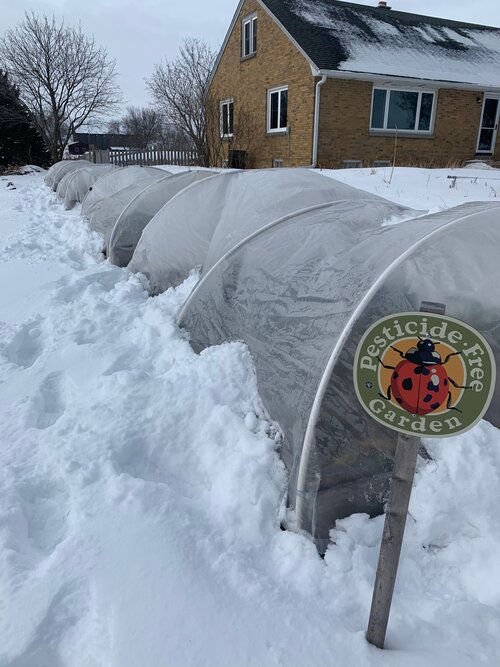What Lies Underneath
- happydayfarmhaus
- Jun 7, 2022
- 3 min read
A cool, overcast Spring day. Perfect for planting. And now, the kale is officially in! So far, tons of greens, spinach, scallion and carrots have been planted. Full steam ahead.

This got me thinking about the prep work that goes into putting these miraculous little seedlings into the ground. So here I am to fill you in on just that… but more specifically, the soil these seedlings grew up in for many weeks. Some call is soil, some call it dirt, and we spend a lot of time working with it all year!
Every farm has a different system for growing veggies, based on labor, space, equipment and knowledge. For us, we till, use compost, and also incorporate soil amendments. Our first step to prepping is planning out the successions of plantings in each row so that we never follow the same family of veggies. Crop rotation helps keep soil and plants healthy. After we know what we want to plant, we clear out any existing vegetation to reduce disease pressure that may come from a previous crop.
Once the conditions are right (no rain in the forecast) we then do a light till. Do I wish we could navigate over to no-till? Hundred percent yes. Low-till, or no-till practices are used a lot in organic farming, since tilling disrupts both soil structure and soil-loving organisms, and also can contribute to erosion. We try our best to limit tilling, but since we’re changing over our beds so rapidly throughout the season we use tilling to kill off weeds and create raised beds. Plus, as new-bee farmers, we haven’t mastered crop planning, and building a stale seedbed without tilling is on our need-to-learn-how-to-do list. At the very least, we’ll be trialing it this season in some fashion.
Next up, prepping the rows. We’ve been better about measuring out the distances between rows so that the weed mat and plastic row covers can smother any weeds. Last year, sometimes we were off by a few inches, and man alive, giant tree-like weeds can sneak up on you like that!
We then shovel in loads of compost. We use Blue Ribbon Organic compost, which is made right here in the Greater Milwaukee area. After a few hours moving compost we walk the rows, and sprinkle amendments. Aka fertilizer. Side note—last year we did not do this step. We noticed some issues with the plants (too leafy, not much fruit, succumbing to disease pressure too easily) and our soil test showed we were severely lacking the proper N-P-K balance. So now, we use 2 types of organic fertilizer—chicken litter/manure for nitrogen and a trace mineral mix for P, K, boron, and more— from a great local supplier out of Blue Mounds, WI. It took time this winter to research… it was important to us to find an organic provider that could supply the right products, because simply using generic fertilizer from the store (like 10-10-10) tends to over-fertilize certain veggies and during rainstorms, the runoff contributes to water pollution. Fingers crossed, and high hopes ahead for this new addition!

A look at the sprinkled minerals
Next, we mix it all together one last time with the tiller on a higher speed to give us a nice planting bed, and then lay out the drip tape irrigation on top. Oh, the joys of storing drip tape in winter, making the untangling of it in the Spring quite a feat. Finally, we’re ready to lay the raised bed. We change the tractor attachment to the bed layer, ramp up the tractor to full power and roll the beds out. After raking the walking rows smooth, weed mat is unrolled and stapled down.
Only then is it time to get planting! And I hope that my skills in the greenhouse getting these seedlings ready to go into the ground is up to par as well!




